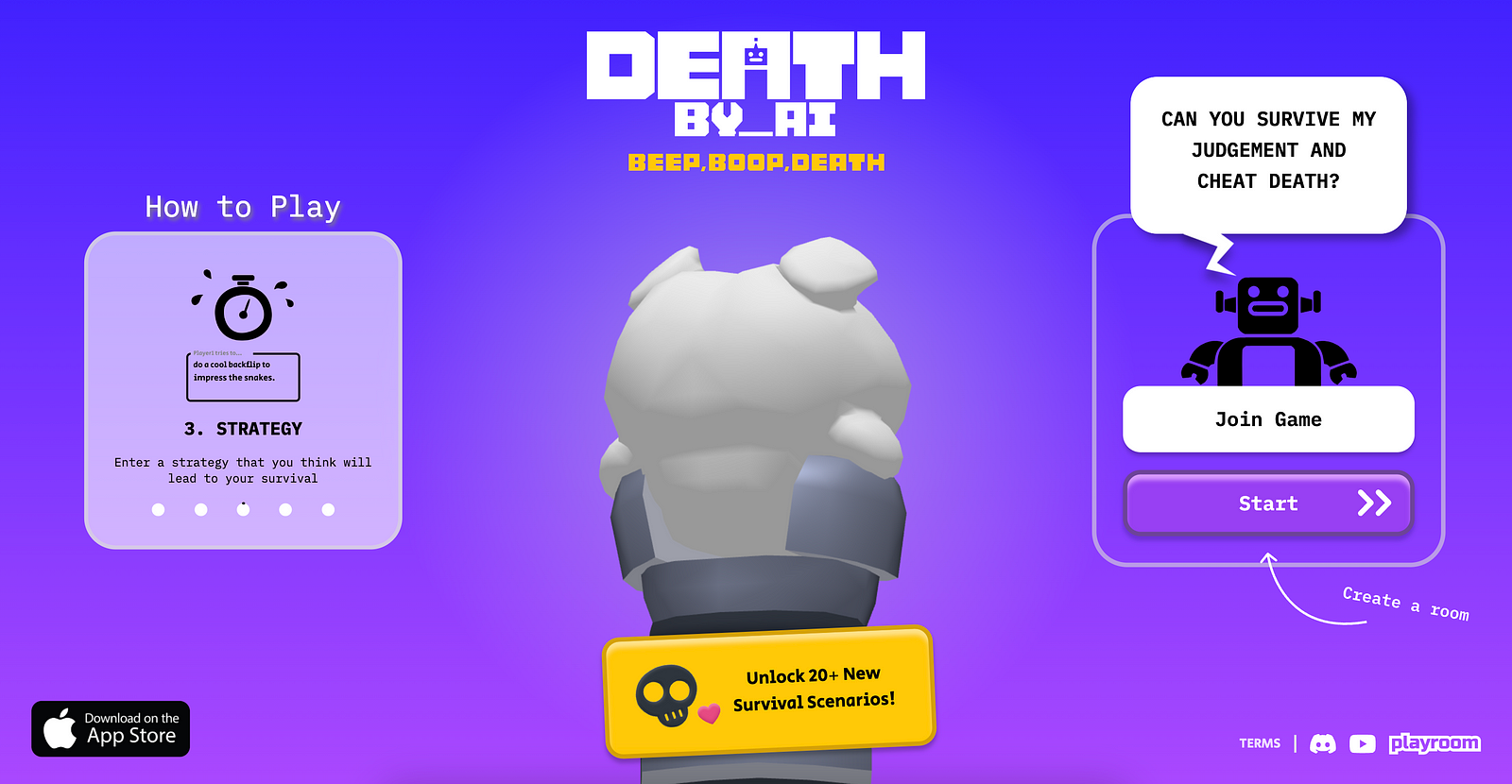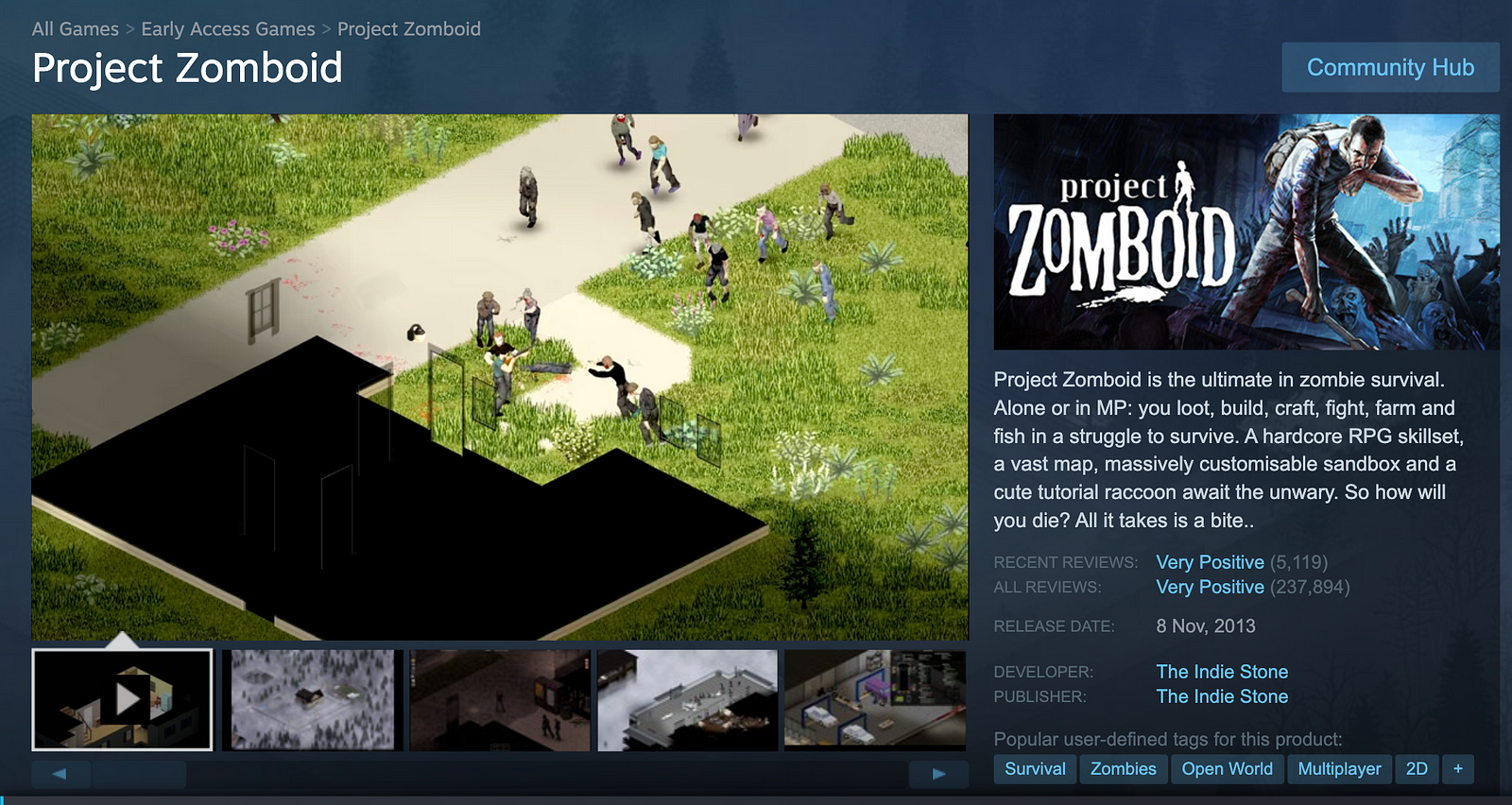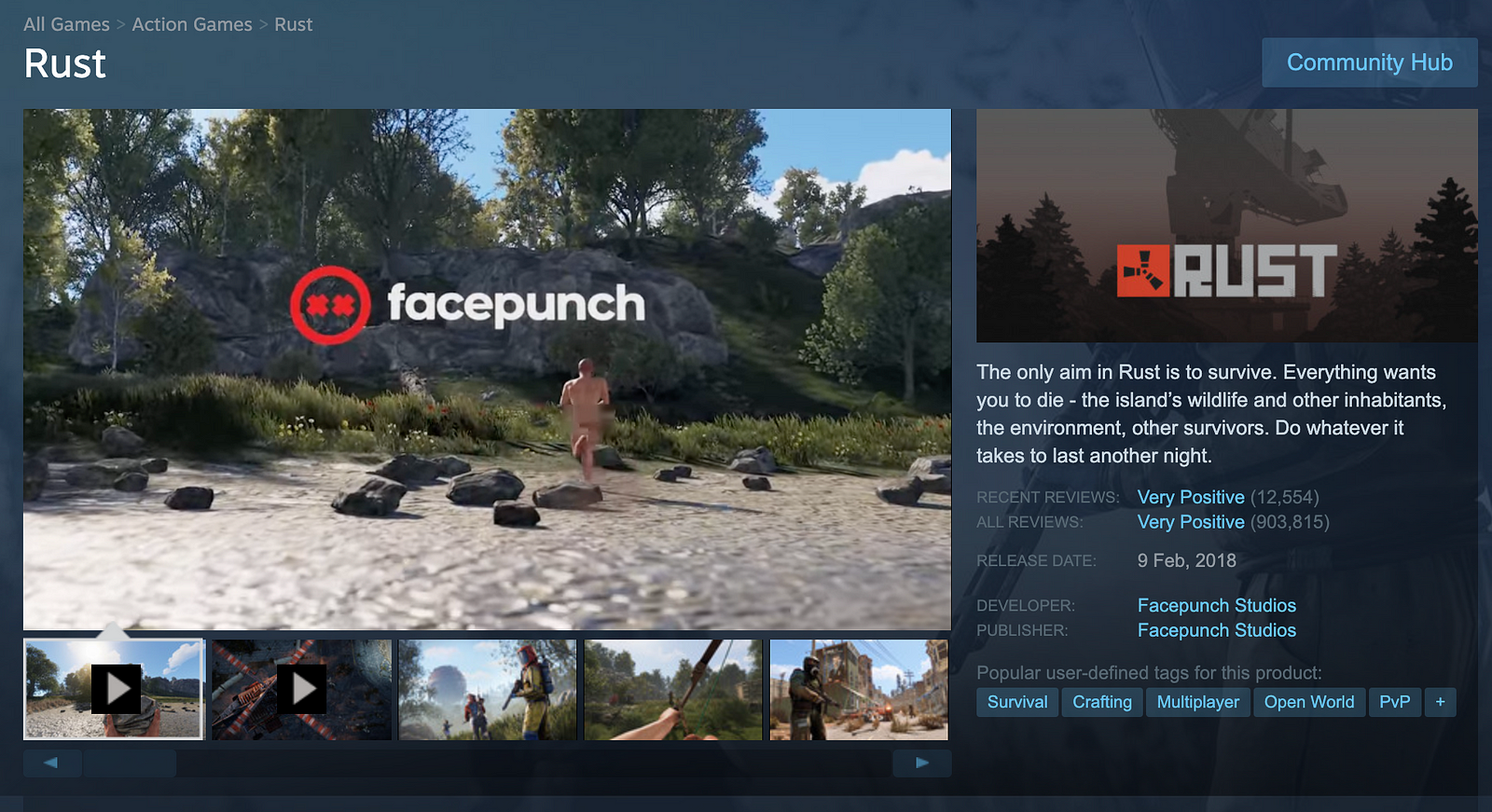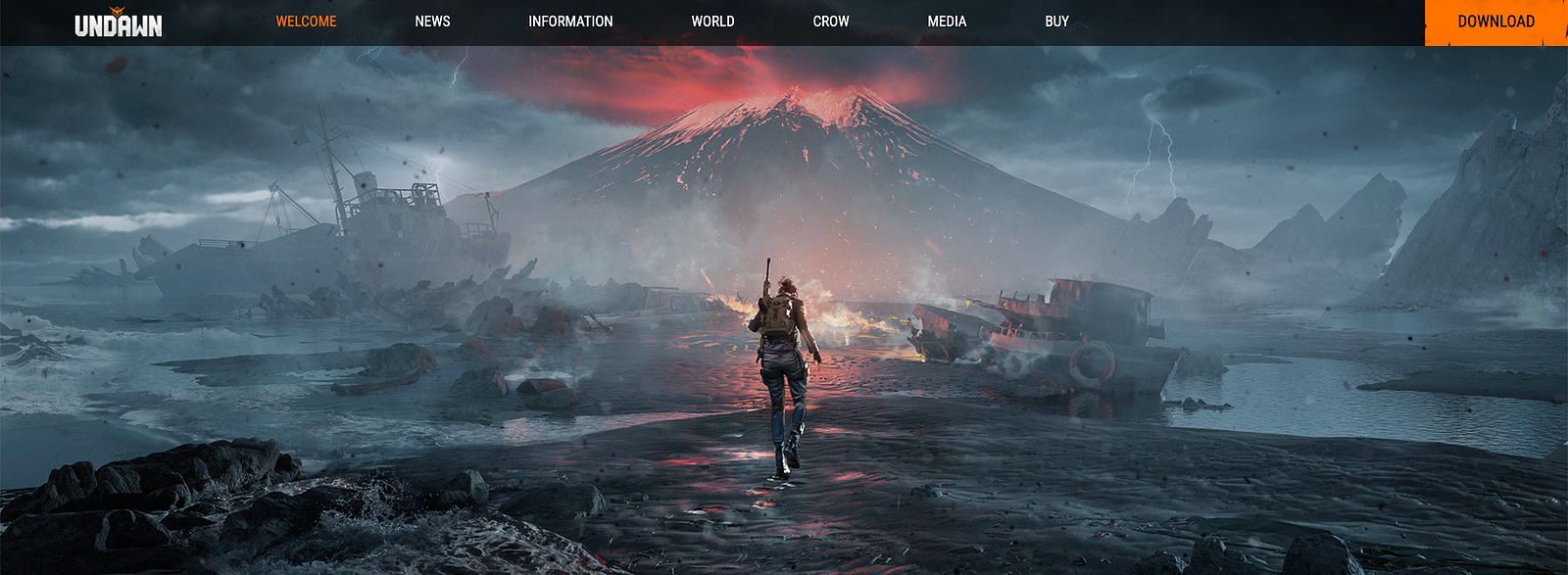Key Highlights
Introduction to AI Survival Games: AI survivor games are a subgenre that combines survival mechanics with sophisticated AI systems, where players face AI-controlled challenges such as adaptive enemies, resource competition, and dynamic environments.
Market Overview: The generative AI in gaming market is projected to grow from $1.13 billion in 2023 to $11.1 billion by 2033, driven by the demand for personalized gaming experiences and the integration of advanced AI technologies.
Advantages Over Traditional Survival Games: AI survivor games stand out by offering features like dynamic difficulty scaling, more realistic NPC behaviors, and procedural world generation, providing players with varied and immersive experiences.
Top AI Survival Games: Explore games like “The Forest” with its AI-driven tribal enemies, “Project Zomboid” where NPCs adapt to your survival tactics, and “Rust,” which combines player-vs-player combat with AI-controlled wildlife.
Development Essentials: Essential elements include creating intelligent opponents that learn and adapt, designing environments that change with player actions, and implementing systems for realistic resource management and advanced pathfinding.
Key Tools and Technologies: Utilize game engines like Unity and Unreal Engine for development, TensorFlow and LLM API for machine learning-driven AI behaviors, and procedural generation techniques to create vast, dynamic worlds.
Introduction
In the rapidly evolving landscape of game development, AI survival games are emerging as a fascinating frontier for developers. These games blend the thrill of survival mechanics with the sophistication of artificial intelligence, creating dynamic and unpredictable gameplay experiences. As a developer, diving into AI survivor games offers you the chance to innovate and push the boundaries of what’s possible in gaming. In this guide, we will explore the core elements that make AI survival games unique, the tools and technologies essential for their development, development tips and the future trends that will shape this exciting genre.
What Are AI Survival Games?
AI survival games are a subgenre of survival video games that incorporate artificial intelligence (AI) elements to enhance gameplay. In these games, players must navigate challenging environments while managing resources, crafting items, and often defending against AI-controlled enemies or threats. The AI can take various forms, including hostile creatures, NPCs (non-player characters), or even environmental challenges that adapt to the player’s actions.
What Are the Key Features of AI Survivor Games?
Dynamic AI Behavior
The AI in these games often exhibits complex behaviors that can change based on player actions. This can include strategic attacks, resource gathering, or even forming alliances with players.
Resource Management
Players must gather resources such as food, water, and materials to survive. The AI may also compete for these resources, adding an extra layer of challenge.
Crafting and Building
Many AI survival games allow players to craft tools, weapons, and shelters. The AI can influence this aspect by attacking player-built structures or requiring players to adapt their strategies.
Environmental Challenges
The game world may feature dynamic weather, day-night cycles, and other environmental factors that the AI can exploit or respond to, creating a more immersive experience.
Cooperative and Competitive Elements
Some games allow players to team up against AI threats, while others pit players against each other in a struggle for survival, with AI acting as a common enemy.
How Big Is the Market of AI Survival Games?
The market of AI survivor games belongs to the bigger market of AI in Online Gaming Market. According to Market.US, here is an overview of the AI in Online Gaming Market and the opportunities it presents.
Market Overview
The Generative AI in Gaming Market is expected to grow from USD 1,136.8 Million in 2023 to USD 11,106.6 Million by 2033, with a CAGR of 25.6%, driven by the increasing demand for personalized and immersive gaming experiences and the integration of AI technology in game development.

Challenges in the Generative AI in Gaming Market
High Costs and Complexity: The development of AI-driven games often involves significant costs and complex technical challenges, which can be a barrier for smaller development studios.
Ethical Implications: Concerns about the ethical use of AI-generated content include issues related to intellectual property rights, the potential for AI to create biased or inappropriate content, and the need to ensure content quality and consistency.
Job Displacement: The automation capabilities of generative AI could lead to job displacement within the game development industry, particularly for roles that involve manual content creation.
Operational Concerns: Operational challenges include managing the high computational power and data requirements necessary for training and implementing generative AI in gaming.
Data Privacy and Security: Privacy concerns are paramount, especially regarding the data used to train AI models, which may include sensitive or personal information.
Opportunities in the Generative AI in Gaming Market
Procedural Content Generation (PCG): PCG is a significant opportunity, enabling developers to create vast, diverse game worlds and unique landscapes, structures, and quests, which can greatly enhance player experience and increase replayability.
Character Creation and Interaction: Generative AI can produce realistic and diverse characters with distinct traits and behaviors, leading to more engaging and personalized interactions within games.
Dynamic Narratives: AI can be used to craft dynamic narratives that adapt to player choices, making the storytelling experience more immersive and tailored to individual players.
Expansion into VR and AR: The integration of generative AI with VR and AR technologies presents an opportunity to create highly immersive and responsive gaming experiences, potentially attracting new market segments and expanding the overall gaming audience.
Market Growth: The global gaming industry is projected to grow substantially, with the number of gamers worldwide expected to reach 3.38 billion by 2023, driving significant revenue and market expansion for AI-driven gaming innovations.
Mobile Gaming Leadership: With mobile gaming spending surpassing other gaming platforms, there is a considerable opportunity for generative AI applications in mobile gaming to further enhance this market segment.
Cross-Platform Gaming: The trend of gamers playing across multiple platforms within a six-month period suggests opportunities for generative AI to be leveraged across various gaming devices, offering consistent and engaging experiences.
What Advantages Do AI Survival Games Offer Over Traditional Survival Games?
1. Dynamic Difficulty Adjustment
AI survival games can implement dynamic difficulty adjustments based on player performance. This means that the game can adapt in real-time to provide a balanced challenge, making it more engaging for players of varying skill levels. Traditional survival games often have a fixed difficulty level, which may not cater to all players’ needs.
2. Enhanced NPC Behavior
In AI survival games, non-player characters (NPCs) can exhibit more complex and realistic behaviors. Advanced AI allows NPCs to learn from player actions, react intelligently to threats, and even collaborate or compete with players in more nuanced ways. This creates a more immersive and unpredictable environment compared to traditional games, where NPC behavior may be scripted and less responsive.
3. Procedural Generation
AI can enhance procedural generation techniques, allowing for more varied and unpredictable game worlds. This means that each playthrough can offer a unique experience, with different resources, challenges, and environments. Traditional survival games may rely on pre-designed maps, which can lead to repetitive gameplay.
4. Improved Resource Management
AI systems can optimize resource management within the game, providing players with more strategic options. For instance, AI can analyze player behavior and suggest optimal resource allocation or crafting strategies, enhancing the overall gameplay experience. Traditional survival games may not offer such tailored guidance, leaving players to navigate resource management on their own.
5. Realistic Environmental Interactions
AI can facilitate more realistic interactions with the game environment. For example, weather systems, wildlife behavior, and ecosystem dynamics can be simulated more accurately, affecting gameplay in meaningful ways. Traditional survival games may have limited environmental interactions, reducing the sense of realism.
6. Player-Centric Experiences
AI survivor games can create personalized experiences by analyzing player preferences and play styles. This can lead to tailored quests, challenges, and storylines that resonate more with individual players. Traditional survival games often follow a one-size-fits-all approach, which may not cater to diverse player interests.
What Are the Top AI Survival Games?
AI Survivor Game 1: Death by AI
This game places players in a world where AI can either assist or hinder their survival, requiring players to make strategic decisions about their interactions with AI entities.

AI Survivor Game 2: Project Zomboid
Project Zomboid is a well-known zombie survival game that features a complex AI system. The game allows players to manage their survival in a post-apocalyptic world filled with zombies and human NPCs. The AI in Project Zomboid is notable for its ability to create challenging scenarios, as NPCs can react dynamically to player actions, making each playthrough unique.

AI Survivor Game 3: The Forest
In The Forest, players must survive on a deserted island after a plane crash. The game features cannibalistic tribes with AI that adapts to player behavior. The enemies can strategize and coordinate attacks, making the survival experience more intense and engaging.

AI Survivor Game 4: Rust
Rust is a multiplayer survival game where players must gather resources, build bases, and fend off threats from other players and AI-controlled animals. The AI in Rust includes wildlife that behaves realistically, adding to the survival challenge.

AI Survivor Game 5: DayZ
DayZ is a multiplayer open-world survival game set in a post-Soviet state. The game features a mix of human players and AI-controlled zombies. The AI zombies are designed to create a challenging environment, as they can detect players and react accordingly, adding to the tension of survival.

AI Survivor Game 6: Undawn
Undawn is a newer entry into the survival genre that combines elements of MMO gameplay with survival mechanics. The game features advanced AI that enhances the survival experience, including enemy factions that can attack player bases, creating a dynamic and engaging environment.

Essential Components for AI Survival Games Development
Developing AI survival games comes with special challenges. These challenges go beyond regular game design. Developers need to balance different systems. This ensures the gameplay is fun and gives players a tough but satisfying experience. Getting this balance right is crucial.
Intelligent opponents that can change based on player tactics and dynamic environments that react to actions in the game are key parts of the game. Each of these elements adds to the depth and real feeling of the game world. By focusing on these important components, developers can create memorable AI survivor games that both attract and challenge players.
1. Designing Intelligent Opponents
Intelligent opponents are very important in any fun AI survival game. Instead of just following set patterns, these opponents should think strategically and adapt to situations. By watching how players act and looking at the game, AI opponents can make smart choices. This keeps players challenged and stops the game from becoming boring.
A good example is Sullla’s well-known “Civ IV AI Survivor” series on Twitch. In this series, different Civilization IV AI leaders compete for the top spot. The unpredictable AI keeps viewers excited every season. By adding similar intelligence and surprises, game developers can create a richer and more difficult experience.
Whether it is predicting player moves, using limited resources, or changing to different styles of play, smart opponents are key for an exciting survival game. Adding decision-making tricks and learning skills lets AI opponents get better as the game goes on. This makes for a fun and engaging experience for players.
2. Crafting Dynamic Environments
The environments in an AI survival game are very important. They affect gameplay, not just look nice. These environments feel alive and make players think strategically. Adding changing weather, resource locations, and animal behavior brings surprises, much like the “raging barbarian” setting in Sullla’s Civilization IV AI Survivor series.
Picture this: a sudden blizzard hits, taking away players’ resources and forcing them to find shelter. Or, think about a pack of wolves changing their hunting habits based on what food is available. These changing factors create more challenges and strategies, similar to real-life survival situations.
Online groups, like subreddits for survival games such as Civ IV or other gaming talks on Reddit, are full of players looking for these engaging experiences. By adding dynamic environments, game makers build a world that keeps players on their toes. It makes them change their plans and survive in a world that is always changing.
3. Implementing Realistic Resource Management Systems
Resource management is key in survival games. Players need to gather supplies, craft tools, and manage what they have to stay alive. Creating a good resource management system is all about finding the right mix of things being scarce and easy to find.
Think about players keeping a close eye on their food and water. They must pick which resources are most important and come up with smart plans for the future. Each day brings new challenges as they balance using resources and saving them.
A great survival game provides players with clear info about available resources, crafting recipes, and surroundings. This info helps them make good choices. Adding guides, tutorials, or companion apps in the game can help players learn more and enjoy the game even more.
4. Developing Advanced Pathfinding Algorithms
In a survival game, knowing how to move around the environment is very important. This is where advanced pathfinding algorithms come in. These algorithms help both AI characters and players find the best paths, avoid obstacles, and get through difficult areas easily.
For example, think about a group of survivors trying to escape from zombies. They need to reach a safe place while staying away from the undead. Advanced pathfinding helps them move in a smart way, which makes the game feel more real.
Using good pathfinding algorithms is even more important in large survival games like Civ. Here, units have to cover long distances. Just like how streamers on Twitch show their game strategies, AI-controlled units must also move wisely. They need to explore new areas, fight opponents, or find shelter from tough conditions.
Key Tools and Technologies for Developing AI Survival Games
Creating exciting AI experiences needs the right tools and a good understanding of new technologies. Game developers have many strong resources they can use. Each one helps them make smart opponents, build rich environments, and improve gameplay with machine learning.
Learning to use these tools helps developers turn their creative ideas into real AI survivor games. From well-known game engines like Unity and Unreal Engine to machine learning libraries like TensorFlow, using these technologies is important. They help design fun and memorable experiences for players.
1. Utilizing Unity or Unreal Engine for Game Development

Unity and Unreal Engine are strong platforms for making games. They have many tools and resources for creating exciting AI survival games. Their easy-to-use interfaces, strong scripting options, and large libraries of assets make them great for indie developers and big studios.
These engines help create amazing graphics, real-life physics, and complex game mechanics. They simplify the development process, letting creators focus on making great gameplay and engaging AI systems.
Also, both Unity and Unreal Engine have active developer communities on platforms like Twitch. This support network shares useful resources, tutorials, and tips. It helps people work together and learn in the game development world.
Here’s a quick look at their main strengths:
Unity: Easy interface, large asset store, great for cross-platform development.
Unreal Engine: Strong graphics capabilities, powerful visual scripting system, perfect for high-quality games.
2. Leveraging TensorFlow and LLM for Machine Learning Capabilities
In developing an AI survivor game, TensorFlow and LLMs can work together to enhance various aspects of the game.
TensorFlow, as a powerful machine learning framework, is used to build and train LLMs, which can support intelligent systems within the game. For example, developers can use TensorFlow to train LLMs to generate smart NPC dialogues, dynamic quests, and complex storylines. These models can then be utilized in real-time during gameplay to create a more interactive and personalized experience.
Additionally, TensorFlow can be used to create and optimize AI behavior models, making in-game enemies or NPCs exhibit more complex and unpredictable behaviors. These models can adapt to the player’s actions, increasing the challenge and depth of the game.
When integrating an LLM API into your development process, it’s crucial to choose a model that meets both your technical needs and budget constraints, particularly for AI startups focused on optimizing resources. Novita AI LLM APIoffers a cost-effective option, delivering strong performance without breaking the bank. With Novita AI LLM API, you can access a range of cutting-edge LLMs, including Meta’s Llama 3 and Llama 3.1 series, Microsoft’s WizardLM-2, and Google’s Gemma 2, among others.

Log on to Novita AI website with your Github or Google account and go to “Key Management” in the settings to get your API keys. We offer new users a voucher with some credit to try our products. To add more credit, please visit Billing and Payments and follow the guide on Payment Methods.

3. Applying Procedural Generation Techniques
Procedural generation breathes life into AI survival games by enabling the creation of vast, dynamic, and unpredictable worlds. From intricate cave systems to sprawling landscapes teeming with resources and dangers, this technique introduces a sense of wonder and discovery with each new survivor season or playthrough.
Imagine embarking on a journey in a procedurally generated world; every playthrough in a game like Civ IV becomes a unique and captivating experience. Players encounter distinct environments, face unforeseen challenges, and uncover hidden secrets previously unknown.
4. Exploring AI Behavior Trees for NPC Decision-Making
AI behavior trees are a useful visual scripting tool. They help create complex and believable actions for non-player characters (NPCs). This easy-to-use system allows developers to make NPCs that are smart and respond well, making the game world better.
Picture a group of survivors in a world that has been through an apocalypse. Each survivor has their own personality, reasons for being there, and roles in their community. With AI behavior trees, these NPCs can react to player choices and what happens around them, leading to exciting and unexpected situations.
Think about watching a Twitch streamer engage with NPCs that show different behaviors. Some might help, while others could turn aggressive depending on what the player does.
AI behavior trees help create NPCs that feel real in the game. This is important in survival games, as players’ choices affect not only themselves but also those around them.
What Are the Future Trends of AI Survivor Game?
AI-Driven Game Mechanics
Future survivor games may incorporate AI-driven mechanics that allow for real-time adjustments based on player performance. This could involve creating new game modes that challenge players in innovative ways, such as introducing AI opponents that learn and adapt to player strategies, thereby increasing the game’s replayability and challenge.
Community and Multiplayer Dynamics
AI is expected to play a role in enhancing community interactions within survivor games. This includes the development of AI systems that facilitate better matchmaking, community engagement, and collaborative gameplay experiences. AI could help create more balanced and enjoyable multiplayer environments by analyzing player behavior and preferences.
Focus on Realism and Immersion
As technology advances, there will be a greater emphasis on realism in survivor games. AI can contribute to more lifelike environments, realistic survival mechanics, and immersive storytelling, making players feel more connected to the game world. This trend aligns with the broader push for high-quality graphics and sound design in gaming.
Conclusion
AI survival games represent a thrilling convergence of technology and creativity, offering developers an unparalleled opportunity to craft immersive, intelligent, and ever-evolving game worlds. As you embark on the journey of developing your AI survivor game, remember that the key to success lies in balancing complexity with playability, ensuring that AI enhances rather than overwhelms the player experience. By mastering the tools and techniques outlined in this guide, you’ll be well-equipped to create games that not only challenge and entertain but also leave a lasting impact on players in the ever-expanding world of AI-driven gaming.
Frequently Asked Questions
What is the starting point in developing an AI survival game?
Start by outlining the main parts of your game. Think about how you want the AI to behave and what platform you want to use. Research AI development tools like Unity or Unreal Engine. Also, look into resources that focus on survival game development. Gather as much info as you can.
How do you balance AI difficulty to maintain player engagement?
Balancing the AI’s difficulty requires careful testing and getting feedback from different sources. You can watch Twitch streamers and join discussions on subreddits. This will help you learn about player experiences and make sure the AI is tough but still fair.
Can you recommend resources for learning more about AI in game development?
Reddit groups such as r/gameai and r/gamedev have great talks and helpful resources. Websites for online learning, like Coursera and Udemy, offer detailed courses on AI in game development. They often include insights about app development.
Originally published at Novita AI
Novita AI is the All-in-one cloud platform that empowers your AI ambitions. Integrated APIs, serverless, GPU Instance — the cost-effective tools you need. Eliminate infrastructure, start free, and make your AI vision a reality.
